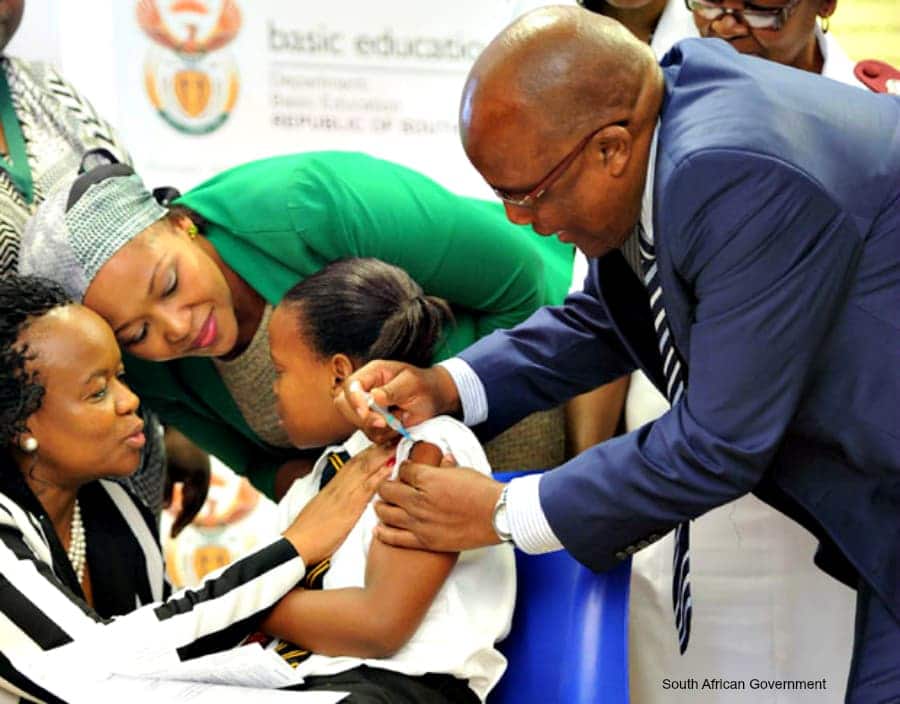Contraceptive device fails to prevent HIV
The trial involved 5 000 women in Soweto, Durban and Harare, but found no difference in HIV infection between women given both condoms and the diaphragm and those given just condoms.
‘Unfortunately, the results do not support the addition of the diaphragm to the use of condoms in current HIV prevention strategies. To date, condoms remain the only proven barrier method for HIV prevention,’ said Dr. Guy de Bruyn of the Perinatal HIV Research Unit of the University of the Witwatersrand, a principal investigator for the study.
The diaphragm, a rubber dome-shaped disk that is inserted over the cervix and used with a lubricant, has been used by women for decades as a contraceptive device. However, the study has dashed hopes that it could also offer women protection against HIV.
During the study, 76 out of 742 Durban women became HIV infected in the group that received condoms only, and 72 out of 743 women became HIV infected in the group that received the diaphragm, lubricant and condoms.
At the Soweto site, 23 out of 505 women became HIV infected in the condom only group, and 24 out of 503 women became HIV infected in the diaphragm and condom group.
In Harare, 52 out of 1229 women in the condom only became HIV infected while 62 out of 1226 became HIV infected in the diaphragm and condom group.
‘In the context of the comprehensive HIV prevention package provided to all participants, the trial found no additional benefit against HIV infection from the diaphragm and lubricant in the intervention arm,’ said the trial’s lead investigator, Dr Nancy Padian, director of the Women’s Global Health Imperative at the University of California, San Francisco.
Both the trial (condom and diaphragm) and control (condom only) groups were extensively counseled on safer sex, how to use male condoms and on the importance of treating sexually transmitted infections to reduce the risk of HIV.
The up-side of the failed trial is that the extensive counseling of the 5000 women led to all of them using condoms more often than they usually would, and more often than the norm in their communities ‘ and thus probably resulted in fewer of the trial participants getting HIV.
The MIRA (Methods for Improving Reproductive Health in Africa) trial was conducted by the Women’s Global Health Imperative in partnership with the Perinatal HIV Research Unit, the Medical Research Council of South Africa, the University of Zimbabwe, and Ibis Reproductive Health.
Author

Kerry Cullinan is the Managing Editor at Health-e News Service. Follow her on Twitter @kerrycullinan11
Republish this article
This work is licensed under a Creative Commons Attribution-NoDerivatives 4.0 International License.
Unless otherwise noted, you can republish our articles for free under a Creative Commons license. Here’s what you need to know:
You have to credit Health-e News. In the byline, we prefer “Author Name, Publication.” At the top of the text of your story, include a line that reads: “This story was originally published by Health-e News.” You must link the word “Health-e News” to the original URL of the story.
You must include all of the links from our story, including our newsletter sign up link.
If you use canonical metadata, please use the Health-e News URL. For more information about canonical metadata, click here.
You can’t edit our material, except to reflect relative changes in time, location and editorial style. (For example, “yesterday” can be changed to “last week”)
You have no rights to sell, license, syndicate, or otherwise represent yourself as the authorized owner of our material to any third parties. This means that you cannot actively publish or submit our work for syndication to third party platforms or apps like Apple News or Google News. Health-e News understands that publishers cannot fully control when certain third parties automatically summarise or crawl content from publishers’ own sites.
You can’t republish our material wholesale, or automatically; you need to select stories to be republished individually.
If you share republished stories on social media, we’d appreciate being tagged in your posts. You can find us on Twitter @HealthENews, Instagram @healthenews, and Facebook Health-e News Service.
You can grab HTML code for our stories easily. Click on the Creative Commons logo on our stories. You’ll find it with the other share buttons.
If you have any other questions, contact info@health-e.org.za.
Contraceptive device fails to prevent HIV
by Kerry Cullinan, Health-e News
July 12, 2007



